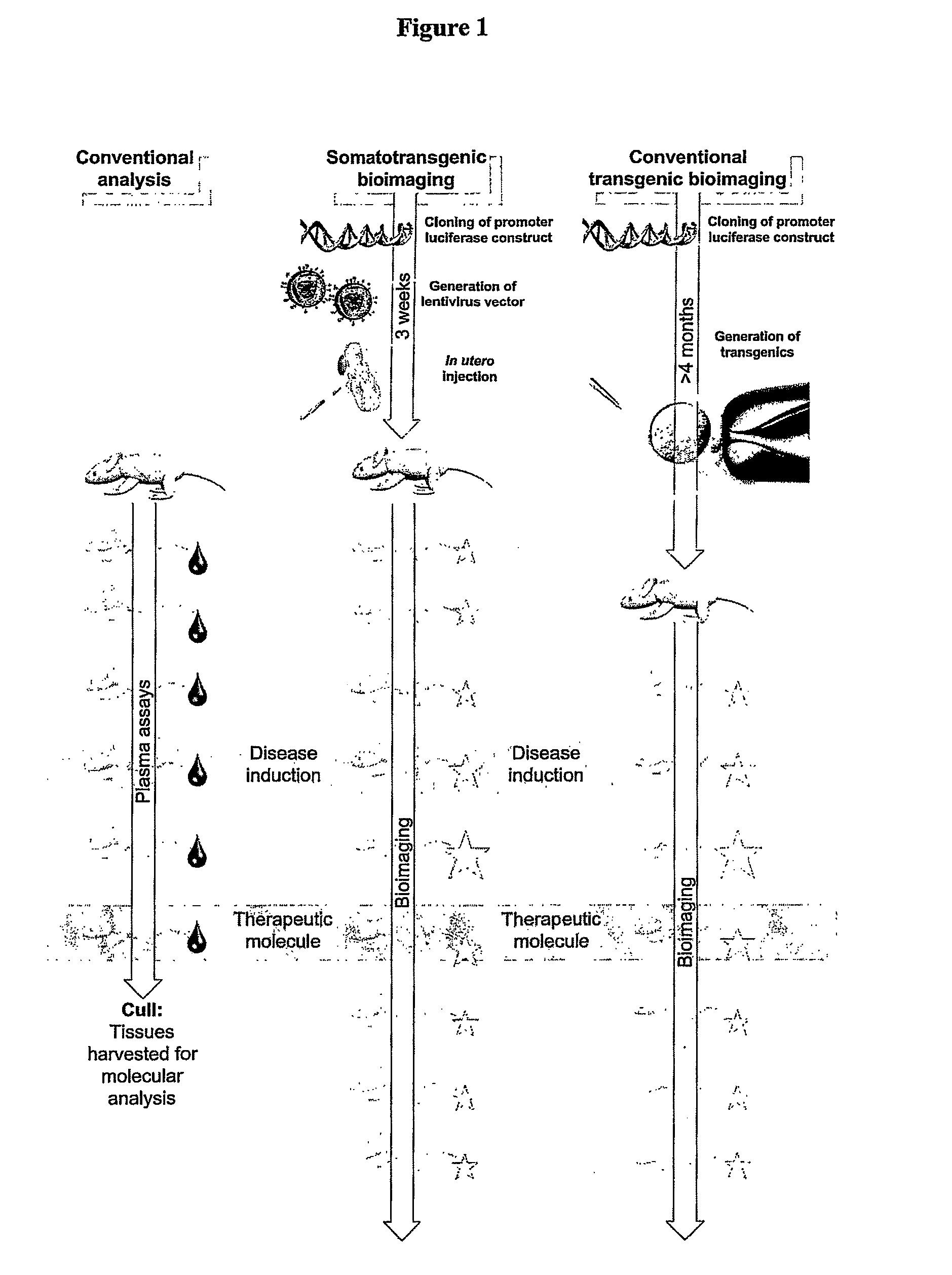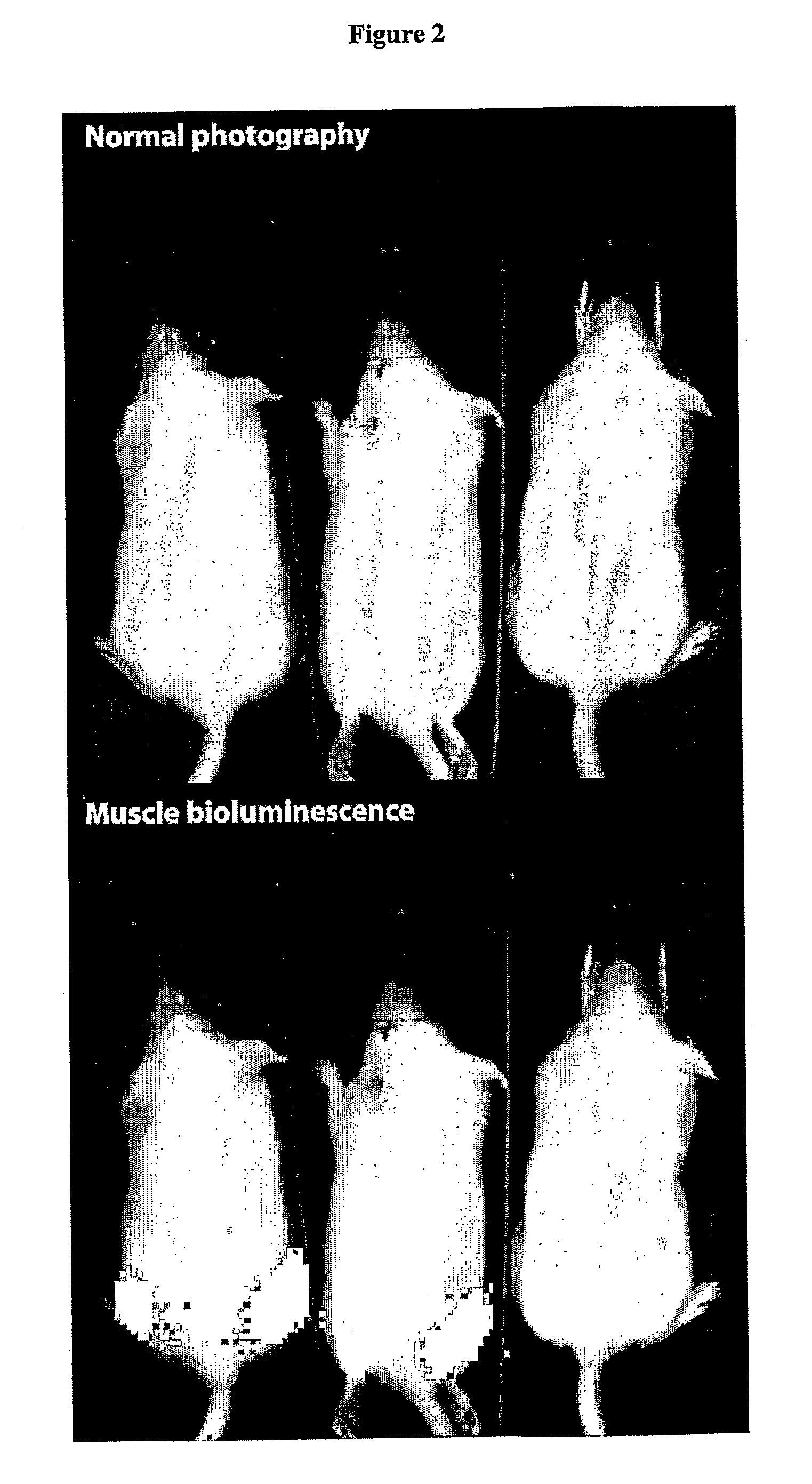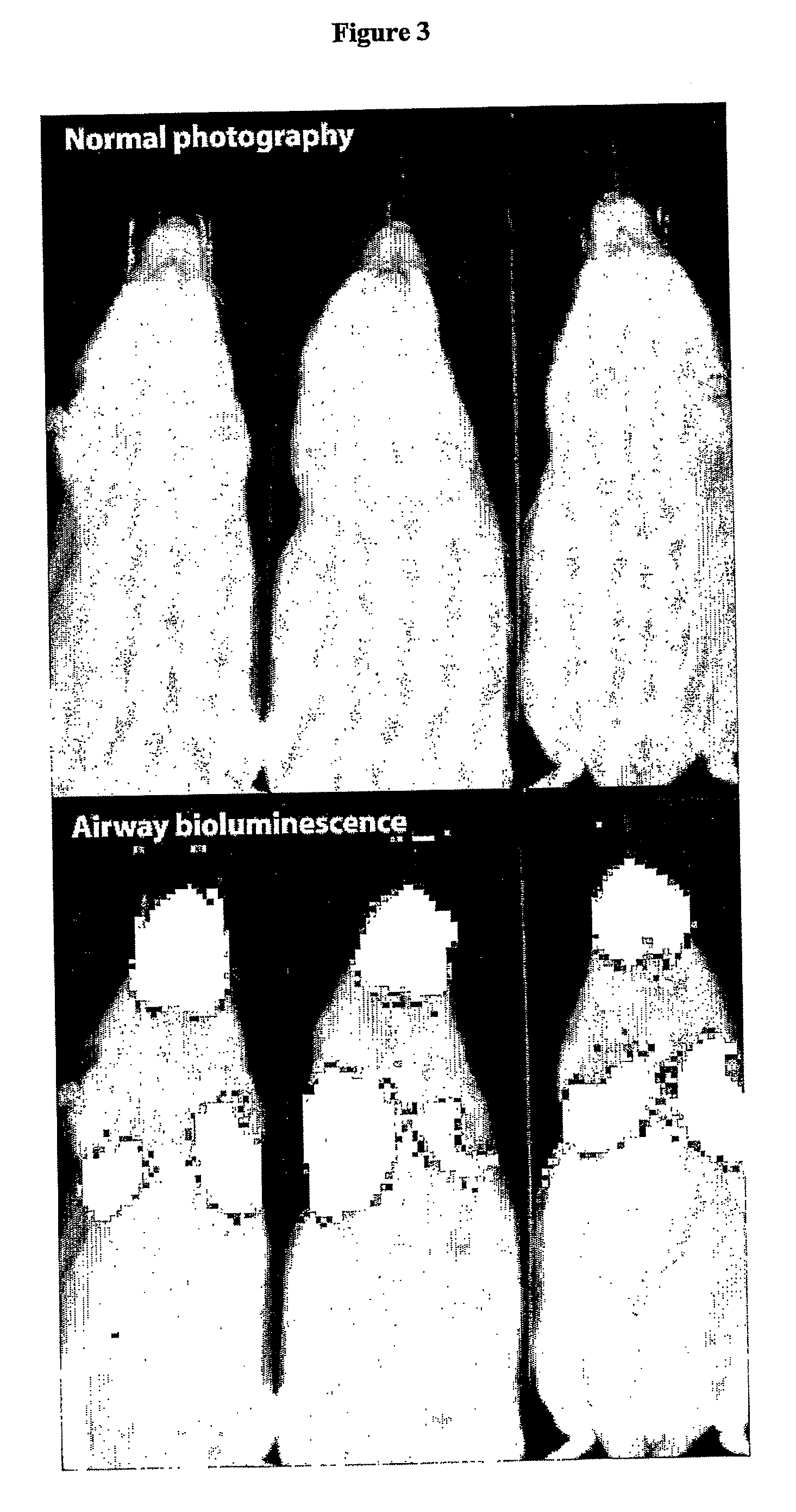Somatotransgenic bioimaging
a bioimaging and somatosensor technology, applied in the field of model pathologies, can solve the problems of poor drug candidates, toxicity, toxicity, and toxicity of cyps, and achieve the effect of monitoring the progression of a pathology and avoiding the effect of position effects
- Summary
- Abstract
- Description
- Claims
- Application Information
AI Technical Summary
Benefits of technology
Problems solved by technology
Method used
Image
Examples
example 1
[0098]Experiments were conducted to determine the possibility of achieving long-term tissue-specific transgene expression in mice.
Vector Production and Validation
[0099]The gp64- and vsvg-pseudotyped luciferase vector used for long-term analysis was produced as previously described by Seppen et al (Seppen J, Rijnberg M, Cooreman M P, Oude Elferink R P. Lentiviral vectors for efficient transduction of isolated primary quiescent hepatocytes. J Hepatol 2002; 36: 459-465).
[0100]Lentivectors were prepared as follows: Producer 293T cells were seeded at 2×107 cells per T-150 flask. The next day, plasmid DNA was mixed in the following amounts per T-150 flask; vector construct (pHR.SINcpptSEW) 40 μg, pMDG.2 / pHCMVwhvGP64 10 μg, pCMVΔ8.74 30 μg to a final volume of 5 ml in OptiMEM (Invitrogen, Paisley, UK). Polyethylenimine (PEI, 25 kDa) (Sigma, Poole, UK) was added to 5 ml of OptiMEM to a final concentration of 2 μM and filtered through a 0.22 μm filter. The DNA was added dropwise to the PEI s...
example 2
[0106]In order to assess long-teen transgene expression, a single intra-amniotic dose of gp64 / HIV-luciferase (˜3×107 iu) was administered to neonatal mice at day 1 (n=5). Mice were subjected to bioimaging over the course of one year and beyond and luciferase bioluminescence compared to controls (n=2). In vivo luciferase bioimaging was carried out as in Example 1. Luciferase expression was substantially above background throughout the analysis and persisted throughout this study (FIG. 6). The results demonstrate that significant expression is detectable up to one year after application.
example 3
[0107]Genetic bioeffectors useful in animal models were tested in vitro (Examples 3 to 5).
[0108]NIH-3T3 cells were transfected with plasmids containing TGF-β responsive elements driving luciferase expression. These cells were then transduced with a retroviral vector expressing TGF-β3. The SBE4 responsive element is specific to TGF-β activation via smad2 / 3 mediated transcriptional activation. This Smad activation can be further delineated to Smad2 specific transcriptional activation using the ARE responsive element in conjunction with the xenopus Fast-1 transactivator (ARE alone is only Smad2 / 3 specific). The BMP-specific responsive element activates through Smad1 / 5 / 8 activation and should not be responsive to TGF-β3 activity. Finally, Smad7 is an inhibitor Smad and is known to be upregulated in a negative feedback loop by TGF-β3 activation. The experiment was conducted as follows:
[0109]NIH-3T3 cells pre-plated at 1×106 cells / well and transfected with 10 μg of reporter plasmid by sta...
PUM
| Property | Measurement | Unit |
|---|---|---|
| Responsivity | aaaaa | aaaaa |
| Toxicity | aaaaa | aaaaa |
| Bioluminescence | aaaaa | aaaaa |
Abstract
Description
Claims
Application Information
 Login to View More
Login to View More - R&D
- Intellectual Property
- Life Sciences
- Materials
- Tech Scout
- Unparalleled Data Quality
- Higher Quality Content
- 60% Fewer Hallucinations
Browse by: Latest US Patents, China's latest patents, Technical Efficacy Thesaurus, Application Domain, Technology Topic, Popular Technical Reports.
© 2025 PatSnap. All rights reserved.Legal|Privacy policy|Modern Slavery Act Transparency Statement|Sitemap|About US| Contact US: help@patsnap.com



